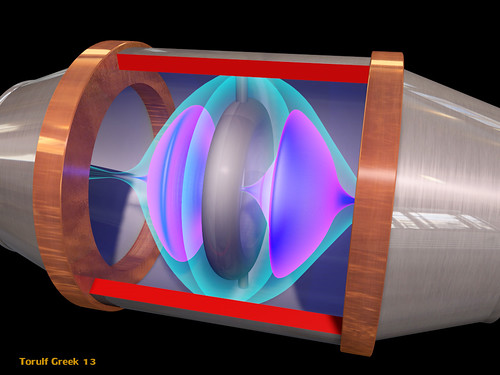93143 wrote:Has it really been so long that you've all forgotten how this is supposed to work? Or is there more data that I've missed somehow?
Potential well formation in Polywells is shown experimentally to occur, and to reach at least 80% of the drive voltage even in relatively primitive machines. Wiffleball formation was apparent from numerous tests, including both PXL-1 and WB-6, and is implied by Nebel's comments on the subject combined with the continued Navy funding.
The capability of a polywell configuration to trap electrons and form a potential well is not in question.
The question raised was whether a potential well formed by a charge from a virtual, mobile region of charge space could attract enough ions, and the challenge posed was:
ladajo wrote:Show me your numbers that you can not attract enough fuel ions to have a fusion event with a 15KV electron well using what we publically know about (e-) density in the polywell. You say Brillion limit, I say show me.
Those numbers cannot be challenged as all the assumptions are stated. The assumptions behind those numbers are open to interpretations, however, because no experiment has yet shown the extent to which a non-rigid electrode can attract ions.
chrismb, who used to post here, has performed his own experiments and observed motion of fixed, rigid wire electrodes in response to the electric fields of the potential well it forms. This is consistent with observations from other experimenters who have run fusors. That a rigid wire composed of matter that is some 14 orders of magnitude more massive than a cloud of electrons, at 10E22/m^3 density, can be physically moved and displaced by the potential well it forms for itself suggests that the assumption the electrons will stay put when acted on by the electric fields from positive ions is something that needs to be proved experimentally if there are only hand-wavy arguments to the contrary.
A magnetic field only contains charged particles in motion. Questions have to be asked as to how fast, and in what direction, these electrons are moving/caused to move, to determine the likely strength they can cause on the ions.
Ions would be either side of this electron cloud, which would tend to pull it apart.
The whole process of inertial confinement isn't one that has shown any tendency to produce more power than it consumes. A fusor is some 9 orders of magnitude lower than a 'break even' point. Scale up a fusor, and it simply consumes even more power, relative to the fusion rate.
So, the challenge, regarding numbers, was posed, and was answered. What one does/interprets with those numbers is up to the beholder.


